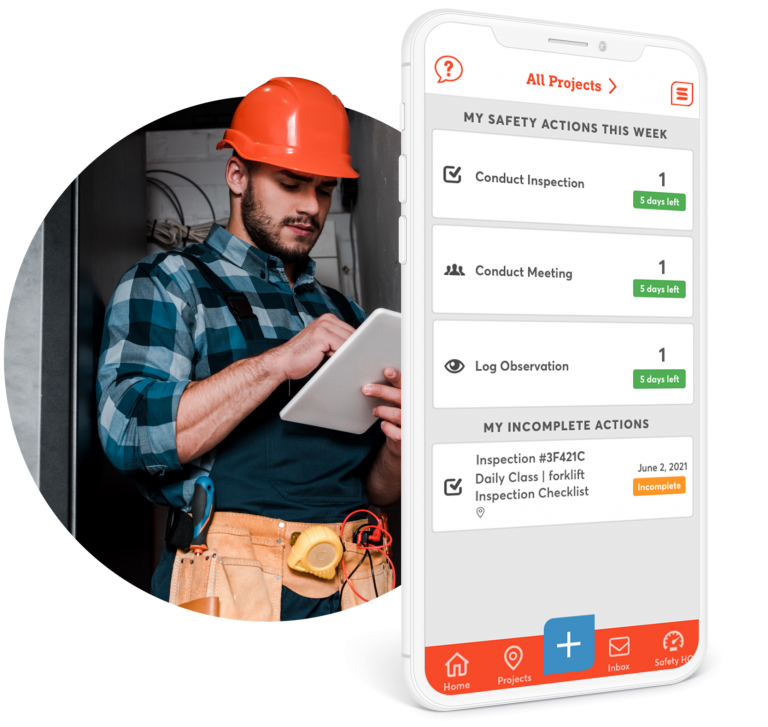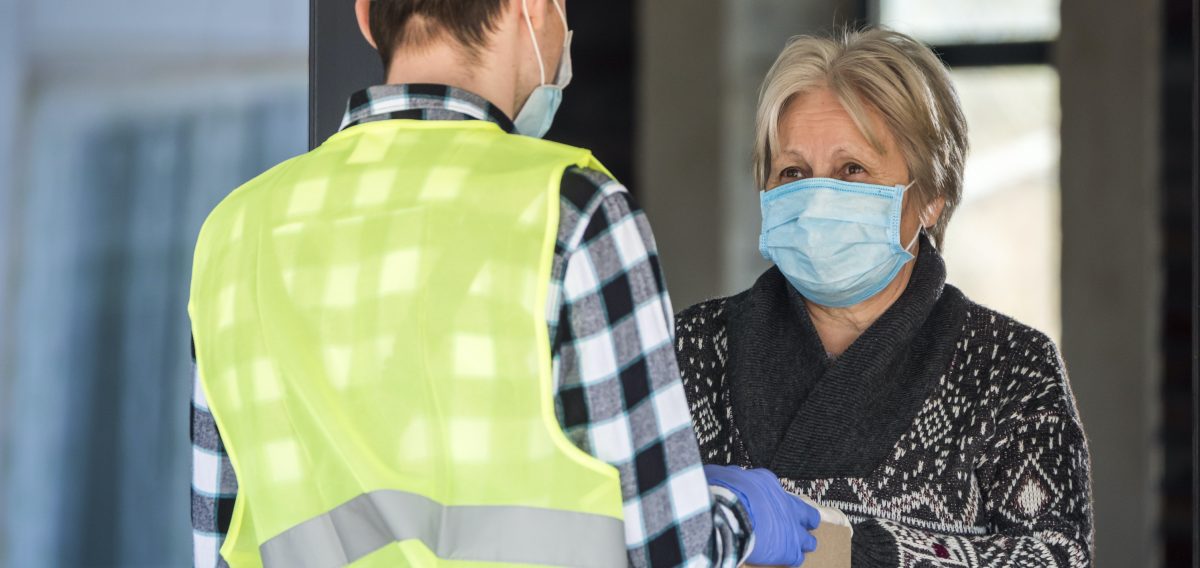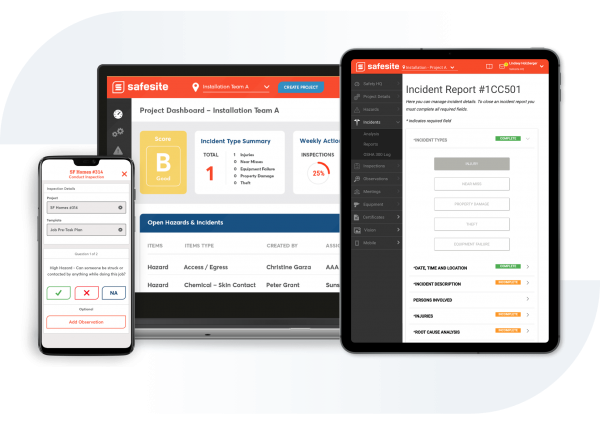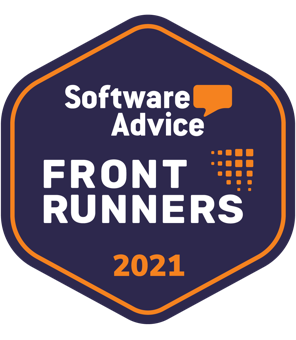
COVID-19 Safety Management Workflows
It’s easy to include COVID-19 prevention and safety measures into your existing safety workflows:
- Regularly assess risk according to area transmission rates and job requirements
- Create COVID-19 work policies and practices in order to reasonably prevent transmission
- Train employees to prevent the spread of illness at work
- Raise hazards, such as a lack of adequate hand washing facilities on a job site
- Run inspections to evaluate adherence to your COVID-19 prevention policies
- Document recordable cases
OSHA COVID-19 Enforcement for the Workplace
As of May 19, 2020, OSHA will “exercise its enforcement discretion” regarding work-relatedness in COVID-19 cases.
Evidence for work-relatedness includes:
- several cases develop among workers who work closely together and there is no alternative explanation
- a case develops shortly after lengthy, close exposure to a particular customer or coworker who has a confirmed case of COVID-19 and there is no alternative explanation.
Is it Recordable?
COVID-19 is a recordable illness for non-exempt companies if the case is work-related and causes time away from work. If a confirmed case occurs in your workplace, OSHA will examine whether you documented the illness on your form
Recording a COVID-19 illness does not, of itself, mean that the employer has violated any OSHA standard. And pursuant to existing regulations, employers with 10 or fewer employees and certain employers in low hazard industries have no recording obligations.
Amanda Edens
Deputy Assistant Secretary, OSHA
If a work-related case resulted in a death or in-patient hospitalization, then it should be reported to OSHA within 8 or 24 hours respectively.

Worker’s Compensation Claims and COVID
Some states are in the process of amending workers’ compensation policy for certain workers, such as first responders and healthcare, such that the case is presumed to be work-related (and therefore covered) unless proven otherwise.
While a few of the states enacting this policy limit coverage to first responders and health care workers, Alaska and Utah for instance, others, like CA, are seeking to extend it to other essential employees.
When seeking to lower risk for workers in essential industries, identify medium to high-probability situations unique to the work environment. Implement changes to reduce worker exposure, and provide means for workers who feel ill or who are exclusively caring for a sick loved one to stay home.
COVID-19 EHS Resource Index
Browse a list of authoritative COVID-19 resources.
- OSHA GUIDELINES – Browse OSHA’s dedicated pages for COVID-19 prevention in the workplace.
- CALOSHA GUIDELINES – See CalOSHA’s latest guidance for preventing COVID-19 exposure in CA.
- SAFESITE COVID-19 SELF-CHECKER – Encourage members of your team to fill out this self check form at the start of each shift.
- COVID-19 PREVENTION CHECKLIST – Run through your list of safe work practices to ensure your plan is being followed.
- ALL COVID-19 CHECKLISTS – Browse the complete list of COVID-19 safety meetings and checklists.
- OSHA COVID-19 TIPS NEWSLETTER – Get actionable tips to share with your team every day.







